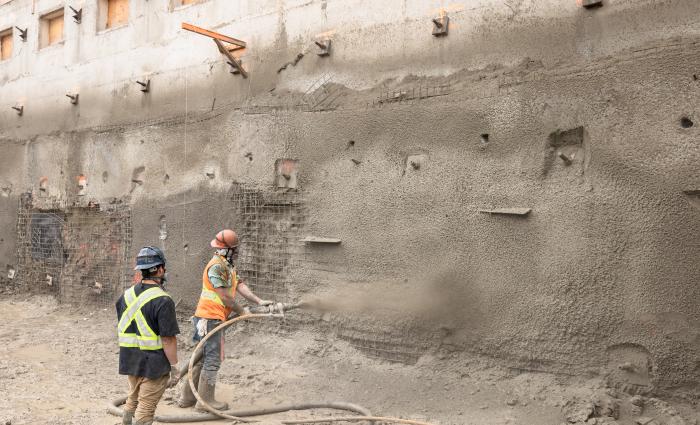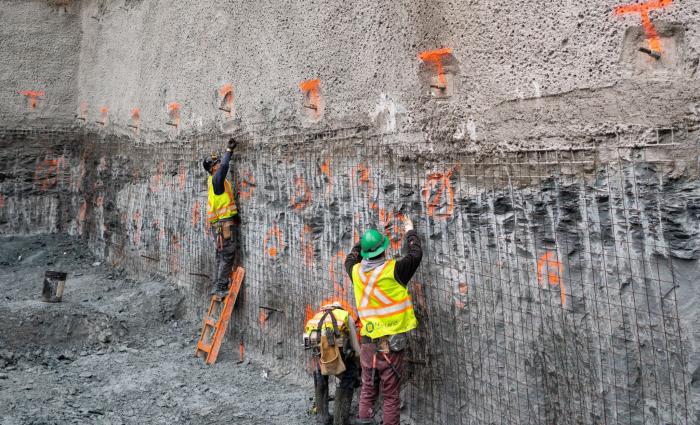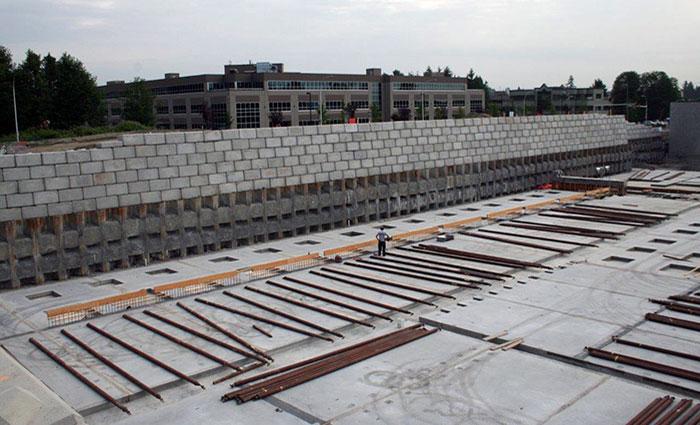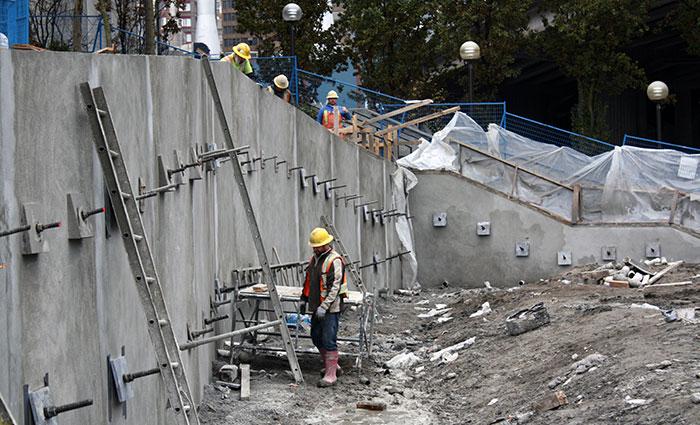Shotcrete refers to any concrete mixture that is sprayed onto the surface using a hose, rather than being laid into forms to cure. BelPacific’s shotcrete specialists work with our clients to determine the shotcrete needs for their specific requirements. Then, we use the latest in industry practices to provide the highest quality service possible and execute the project with our well-trained, service-oriented team that will get the job done safely, on time, and on budget. Regardless of if you’re requiring the classic dry shotcrete, wet shotcrete, structural shotcrete, or any combination of all three, our expert team has the tools and know-how to meet your project needs and deliver a long-lasting product.
Dry Shotcrete
Dry shotcrete is a version of shotcrete whose water and concrete mix is combined at the nozzle. The dry mixture is fed into the nozzle, where it is met with a high-pressure stream of water, simultaneously mixing the two components and propelling the concrete mixture onto the surface. Dry shotcrete requires a very well-trained nozzleman as they control the flowrate of both components. If applied incorrectly, this can result in a surface with varying mix-ratios, which can lead to a less strong surface. With that said, if done correctly, a well-applied dry shotcrete can provide a product with high tensile strength and bond strength on the surface, and results in less waste than other methods, although it’s not naturally strong enough to be load-bearing on its own. Luckily, BelPacific has a well-trained team that can consistently create an even shotcrete surface. That’s why we typically use dry shotcrete to repair damaged concrete surfaces, such as bridges, overpasses, retaining walls, and the walls of buildings.
Wet Shotcrete
The primary difference between wet and dry shotcrete is the time of mixture. Unlike dry shotcrete, wet shotcrete is generally mixed in a concrete truck prior to application. Once fully mixed, the wet shotcrete is fed into the shotcrete gun and sprayed onto the surface in a similar way. Wet shotcrete creates a slightly weaker product. The use case for wet shotcrete can also be limited due to its requirement of truck access. It also results in more waste, as you’ll never be able to recover 100% of the mix from the truck. There are several benefits to we shotcrete, however. The primary benefit is that it’s a simpler and more stress-free process, as you have full control over the mix-ratios that you use while mixing it beforehand. It can also be applied by a less experienced nozzleman, since there is less risk of varying mix-ratios.
Structural Shotcrete:
Wet and Dry shotcretes are fantastic for repair or soil retention, however, they cannot be used to hold significant loads. In situations where the concrete needs to be load-bearing, but traditional formed concrete isn’t desirable, structural shotcrete may be the best option. Structural shotcrete uses reinforcement inside the structure, such as rebar, and results in a product that acts very similarly to traditional concrete. The benefit of structural shotcrete is its wide array of uses where formed concrete wouldn’t be as easily feasible. Such as working on ceilings or underground. BelPacific has a long history of executing high quality structural shotcrete projects in many areas, including the following:
- Soil Retention
- Retaining Walls
- Tunnel Linings
- Shafts
- Bridge Repair
- Sewage Treatment Rehabilitation
- Mining
- Seawalls
- Underground Parkades
- Domes
- Steep Slope Stabilization
- Landscaping
- Swimming Pools
- Rockscapes
- Foundation Repair



